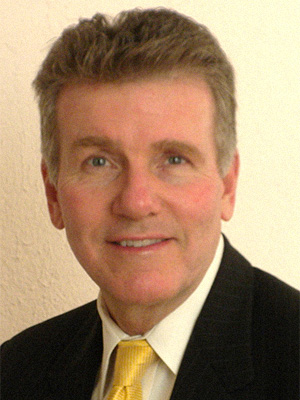Robert E. Peterkin
Contact

Research Professor
Department of Electrical and Computer Engineering
Education
Ph.D. Physics and Astronomy, University of North Carolina at Chapel Hill, 1983
B.S. Physics, Boston College, 1976
Biography
Robert Peterkin was born and raised in New Jersey. He earned a Ph.D. in physics and astronomy from the University of North Carolina at Chapel Hill—writing his dissertation in quantum gravity.
Dr. Peterkin began his professional career at Mission Research Corporation in 1983, and he joined the Air Force Research Laboratory (AFRL) in Albuquerque, NM in 1991 to pioneer the use of high-performance computing for the numerical simulation of both rare and dense plasmas in systems of geometric complexity. In 2002, he began a 3-year term as the Chief Scientist for the U.S. Department of Defense High Performance Computing Modernization Program in Arlington, VA. For his research on numerical methods and supercomputing applications, he was elected as a Fellow of the American Physical Society and a Fellow of the AFRL. In 2004, Dr. Peterkin returned to industry to work for SAIC as Vice President in the Intelligence, Security and Technology Group, in McLean, VA. In 2006, he was named an SAIC Technical Fellow, and between 2006 and 2009 served on the Air Force Scientific Advisory Board. From 2009 through 2017, he served as the U.S. Air Force Chief Scientist for Directed Energy. He pursues his present interests in space science and technology as a staff member for General Atomics. He has authored and co-authored 150 papers that appeared in refereed journals, published conference proceedings, and technical reports.
Throughout his career, Dr. Peterkin has developed numerical algorithms and computational methods to simulate unsteady, complex-geometry resistive magnetohydrodynamics, electromagnetics, and plasmas. In the 1980s and 1990s, he and his colleagues built and distributed the well-known MACH2 and parallel MACH3 resistive magnetohydrodynamic codes. In 1995 he assembled a team at the AFRL to develop and apply parallel electromagnetic particle-in-cell techniques, and this work culminated in the massively-parallel numerical simulation code known as ICEPIC. Dr. Peterkin was the leader of basic research Star Teams for the Air Force Office of Scientific Research between 2000 and 2006. Since 2016, he has been a U.S. representative to NATO’s science and technology organization serving on several Space Domain Awareness research panels. In the past three years, he’s turned his attention to space-based applications of select emerging technologies—serving as the principal investigator for research efforts in the use of optical frequency combs for ultraprecise two-way time-frequency transfer, and for extraterrestrial electromagnetic launch systems to allow lunar resource exploitation for space operations beyond earth’s geosynchronous orbit.
Research Interests
- Numerical Simulation of Plasmas
- High Power Microwave Sources and Effects
- General Relativity
- Space Systems
